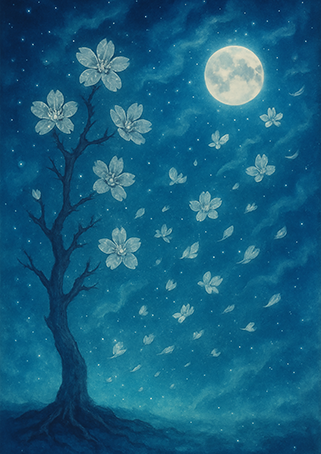Xieyi・The Rootless Tree:24 Chapters-Chapter 8#285

The poems of “The Rootless Tree” express a fundamental force rooted in harmony with heaven and earth, the cyclical flow of yin and yang, and the infinite potential of existence。
This painting is an expressive Xieyi in the tradition of “futu” (spiritual diagrams), passed down for generations in Wudang Mountain, China. It is drawn through a technique where energy flow (xingqi) channels the internal intention into visual form。 In the Taoist world, there exist spiritual and symbolic images called “futu”。
In the Taoist world, there exist spiritual and symbolic images called “futu”。
These are a type of talisman—not merely religious items, but expressive spiritual paintings that act directly on the mind of the viewer。
Since ancient times, many people have placed these Taoist-style “Xieyi” and futu in their homes, studies, or bedrooms, wishing for longevity, health, auspiciousness, and family harmony. Viewing such paintings was not just aesthetic appreciation, but an act of inviting the presence of the Dao into one’s life and tuning the body and mind。
Thus, “Xieyi” is more than artistic expression—it is a medium that bridges the spirit, life, and harmony with the universe。
This kind of artwork is not meant to be seen only with the eyes, but felt with the heart。
It communicates with the Dao, resonates with the qi of nature, and quietly stirs the viewer’s inner self。
Futu and “Xieyi” continue to live on from ancient times to this day as “sacred images that speak to the soul.”
Below, we present the original text of the philosophical poem “The Rootless Tree,” along with a modern Japanese translation and interpretation。
※ The author of “The Rootless Tree,” Zhang Sanfeng (1247–?), is also renowned as the founder of Tai Chi, and it is said that he applied the essence of this work to Tai Chi. As an additional note, we include an interpretation connecting this to the Tai Chi tradition of Wudang Mountain.
Details of Tao Code, Feng Shui and talismans in Xieyi Painting
The composition flows upward from dense black ink to soft gray and radiant gold.
The brushwork opens the space like breath rising from meditation, suggesting both ascension and release.
Light shimmers at the upper edge, symbolizing transcendence beyond the visible.
The piece invites the viewer into a meditative rhythm where form dissolves into emptiness.
This artwork embodies Ascending Qi (Sheng Qi) — the upward, purifying energy of growth, focus, and clarity.
It is ideal for entrances, studies, or creative spaces, enhancing motivation and opening mental pathways.
The golden tone corresponds to the Metal element, bringing precision and refined energy, while the dark-to-light gradient clears stagnation and invites renewal.
May this painting serve as a silent talisman — an unseen current of Qi that lifts the heart and clears the space it inhabits.
The Rootless Tree・Chapter 8

▶Original Text
無根樹,花正飛,卸了重開有定期。鉛花現,癸盡時,依舊西園花滿枝。對月纔經收拾去,又向朝陽補衲衣。這玄微,世罕知,須共神仙仔細推。
▶Modern Translation
Now the blossom on the rootless tree dances in the wind.
Though it scatters, it is destined to bloom again.
The “lead flower” appears at a specific time—
At the lunar year’s end, it blooms once more.
Under moonlight, the flower is harvested,
Then under morning sun, one mends one’s robe.
This profound art is unknown to the common world.
Seek it as if in conversation with an immortal.
▶Interpretation
• “Lead flower” = internal elixir or essence.
• “End of the lunar year” = a moment of transformation.
• “Mend the robe” = repair and refine one’s virtue and energy.
▶Interpretation related to Tai Chi
• Cultivation is cyclical—downturns are part of growth.
• Energy follows rhythms—gather and reawaken.
• Practice shifts between yin (stillness) and yang (movement).
Copyright © MASAKI WAKABAYASHI. All rights reserved.




